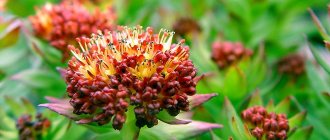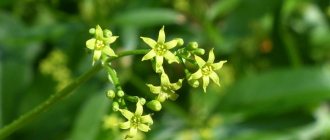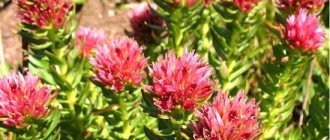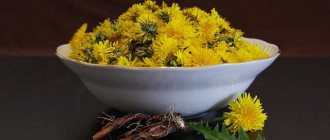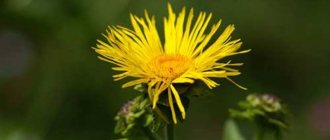This article was prepared by our beloved partners - the #GMfood - an online store of superfoods and craft eco-products.
Just for registering in the store you will receive 300 rubles to your personal bonus account and 2 more interesting gifts (Grab your gifts here)In the store's assortment you will find not only superfoods, but also healthy sweets, breakfasts, herbal teas, peanut butter, master classes for body health and facial beauty, and this is only a small part of the goodies and benefits!
Subscribe to Instagram #GMfood using this link and regularly receive new PP recipes with superfoods, see useful guides to the world of proper nutrition, and also look for gifts hidden under the link in the profile!
Some information about licorice
The homeland of licorice is considered to be Asia Minor and Central Asia and the Mediterranean. It was presumably brought to China by merchants along the Great Silk Road. From China it came to Tibet, then to Europe and America.
Licorice is a genus of herbaceous plants of the legume family. Its representatives are found in the temperate and subtropical zones of Eurasia and America, North Africa, and Australia.
Source Wikipedia
Licorice is one of the most ancient medicinal plants.
Licorice root is used as a medicinal raw material. It has a burning and sugary-sweet taste; it is dug in the fall.
It is popularly called licorice, licorice root. Licorice has a thick, woody rhizome with underground shoots and a root that penetrates deeply into the soil. The stem is straight, reaches a height of 50-100 centimeters. The leaves are oval-heart-shaped, odd-pinnate, covered with sticky punctate veins.
The flowers are small, white-violet, bluish-lilac or lilac, collected in racemes in the form of a spike. One inflorescence can have up to 30 flowers. It blooms in July-August and is a good nectar-bearing plant. The fruits are smooth or hairy beans, compressed from the sides. Ripen in August-September.
Here's how the poet talks about licorice:
What is licorice?
This plant has been used by humanity for thousands of years. It also has a second name - licorice. It is not the entire plant that is valuable, but only its roots, which are dug up in spring or autumn when they reach a size of 25 centimeters in length and at least 1 centimeter in diameter .
There are several types of licorice, but only naked and Ural ones are used for medicinal purposes. And as many years of practice have shown, this plant can treat not only coughs. It grows in North Africa, Central and Western Asia, Europe, and also in Russia. It is easy to find and buy a licorice decoction at any pharmacy, or you can prepare it yourself at home by purchasing dried roots.
Medicinal properties
Licorice root has many beneficial properties:
- Anti-inflammatory;
- Antiviral;
- Antipyretic;
- Expectorants;
- Laxatives;
- Diuretics;
- Antioxidant;
- Antitumor;
- Anti-aging;
- Enveloping;
- Wound healing;
- Antispasmodic;
- Detoxifying.
Ancient Chinese healers believed that licorice root prolongs life, preserves youth and beauty, and increases the body's resistance to various diseases.
The beneficial properties of licorice root are equated to the properties of ginseng. It strengthens the immune system, corrects the endocrine system, reduces cholesterol levels in the blood, and stimulates the secretory function of the glands.
Possible harm
Along with an endless list of beneficial properties, licorice can also cause harm to the body. Contraindications to its use are: pregnancy and lactation, liver cirrhosis, hypertension, liver failure, arrhythmia and diseases of the cardiovascular system.
Currently, doctors are very skeptical about licorice and prescribe it with extreme caution, because long-term use can cause swelling, irritation of the gastrointestinal tract, and may also remove potassium from the body.
Licorice can also cause harm if used uncontrolled, and here’s why:
- It has a laxative effect, which can lead to frequent bowel movements.
- Also, due to the hormonal content, it is worth limiting use in children to avoid enlargement of the mammary glands.
- Liquorice can increase blood pressure.
- Among those that have not been fully studied is the effect of the plant on the reproductive system. According to some data, this influence is very positive, according to others – exactly the opposite.
What does licorice root help with?
Licorice root is recommended for bronchial asthma, bronchitis, pneumonia, gout, rheumatism, and kidney pathology. The effect will be much better if you use complex treatment from the collection of horsetail, birch, and knotweed.
It is prescribed for pyelonephritis, inflammation of the bladder, and urolithiasis.
It is used as an effective aphrodisiac for men, for the treatment of prostatitis, prostate gland.
Licorice root is used to treat angina pectoris, rhinitis, ARVI, nephritis, hypotension, cholelithiasis, nephritis. It is useful for lupus erythematosus, neurodermatitis, allergic dermatitis, and skin diseases. To treat the skin, decoctions and infusions of licorice are used externally.
Licorice root is used for the prevention and treatment of gastrointestinal diseases. Preparations based on it regulate the secretion of gastric juice and relieve heartburn.
To prevent the development of caries and gum inflammation, you can simply chew pieces of licorice root.
Benefits for women
Doctor says
Anastasia Mertsalova
The combined opinion of doctors on this issue
Licorice root in combination with therapy helps treat infertility, normalizes the cycle, restores the level of the hormone estrogen, which is especially important during menopause. Reduces pain on critical days.
Decoctions and infusions are useful for women throughout their lives, as well as during menopause.
During menopause, you can prepare a herbal decoction. To do this, pour half a liter of boiling water over the flowers of calendula, violet, elderberry, licorice root, and buckthorn bark, add 10 g of mallow and leave to brew for half an hour. The prepared decoction should be drunk during the day in 3 doses.
For amenorrhea, in a 1:1 ratio, take licorice root, St. John's wort, rue, juniper berries and pour a glass of boiling water. Brew and let it brew for half an hour. Drink a glass 2 times a day.
To normalize hormonal levels, pour 1 tablespoon of licorice root into a glass of boiling water and cook for half an hour. Then let it brew for half an hour. Take 30 minutes before meals from the 5th day before ovulation. After 3-4 weeks of use, you should take a break.
Licorice root is useful for older people to improve body tone and prolong the period of physical and mental activity.
Decoctions also retain the valuable properties of licorice.
Licorice decoction: dry root (10 g) is placed in an enamel bowl, poured with hot water (200 ml), kept in a water bath under a lid for 15–20 minutes, left for 40 minutes. After cooling, the product must be filtered, the volume increased to 200 ml and taken 1 tablespoon 4-5 times a day. The course of treatment is 10 days.
Licorice leaves are not used as a medicinal raw material, but in folk medicine, a paste of crushed leaves is recommended for sweaty feet. Some cosmetics manufacturers use leaf extract to improve the quality of hyaluronic acid.
Contraindications
Licorice root is contraindicated:
- If you are allergic to the product;
- Individual intolerance;
- Increased activity of the adrenal glands;
- Heart failure;
- Hypertension;
- With blood clotting disorders.
When taking licorice root, be sure to follow the recommendations and dosage indicated in the instructions. It cannot be combined with medications for high blood pressure that have a diuretic effect, or with medications for heart failure.
An overdose can lead to headaches and heart pain, increased blood pressure, and swelling.
Precautions from the instructions
The annotation for licorice syrup contains the following recommendations:
- if the condition worsens or there is no effect of therapy, a doctor’s consultation is necessary;
- to avoid the development of adverse reactions, the drug should not be combined with other products containing licorice;
- for chronic or acute diarrhea, the medicine is taken with caution;
- the medication contains 8% ethanol, which is contraindicated for persons with alcohol dependence;
- Before use, the syrup must be shaken - during storage, sediment will form in it.
Due to the alcohol content, patients undergoing treatment should refrain from driving or operating complex moving machinery.
Application
Licorice glabra is used medicinally to treat respiratory diseases. It has antitussive and mucolytic (sputum thinning) effects. Licorice root is widely used in medicine, pharmacology, and cosmetology.
Licorice root in cosmetology
Despite its rich color, the root has a whitening effect, so it can be used to reduce age spots.
A decoction of licorice root will help strengthen hair, restore damaged ends, and give it shine and volume. With frequent use of the decoction, the hair can be slightly lightened.
Many cosmetic products for dry and sensitive skin have been created based on licorice extract. It is included in anti-aging creams, skin cleansers, hair cosmetics, and whitening products.
Products with licorice gently cleanse the skin, do not irritate it, and normalize the functioning of the sebaceous glands.
In pharmacology
Licorice root is included in diuretic and laxative preparations, in preparations for the treatment of gastritis and peptic ulcers. To treat cough, a chest elixir, licorice root extract, syrup, powder, and tablets are made.
In folk medicine
Licorice root is an effective remedy for restoring liver function. Tea with licorice normalizes blood glucose and cholesterol levels and prevents the development of diabetes and atherosclerosis.
Decoction
A decoction of licorice roots is used for chronic fatigue, to normalize sleep, for rapid fatigue, and to strengthen the nervous system. A decoction prepared with milk is useful for children with whooping cough. Chewing licorice root is recommended for laryngitis and pharyngitis.
To prepare the decoction 1 tbsp. l. Pour a glass of boiling water over the licorice root and cook for 15 minutes in a water bath. After this, let it brew for an hour. Strain, add boiling water to 200 ml and drink throughout the day.
Infusion
Useful for arthritis, ulcers, tumors. To prepare it, 1 tsp. Pour a glass of boiling water over the crushed roots and let it brew for an hour. Drink ⅓ glass a day.
Herbal collection
Useful for colds and coughs.
To prepare it, take 1 tbsp. l. crushed licorice root, tsp. lemon balm, mint, centaury. Brew like regular tea. You need to drink one to two cups a day.
Lotion
It can be prepared at home and used to lighten age spots.
To prepare it, 1 tsp. crushed licorice root, pour 50 ml of vodka and seal tightly. Place in a dark place for 2 weeks. Then strain and add a little boiled water. Wipe your face with the resulting solution once a day.
Hair Mask
It will make your hair healthy and give it volume.
In 200 ml of warm milk add a tablespoon of chopped licorice root and ¼ tbsp. l. saffron Mix and rub into the hair roots while warm. Cover the hair with film, wrap it in a towel and leave for 2 hours. After this, rinse off with warm water.
The procedure should be done 2 times a week for a month.
In cooking
Licorice root can be used as a natural sweetener. It can be added to baked goods instead of sugar to give baked goods a pleasant aroma and sweet taste.
Crushed licorice root can be added to drinks. It will give them an unusual taste and aroma. You can add it to puddings, ice cream, cake creams, and sorbets. You can add licorice root to meat and fish dishes, fruit and vegetable salads, and sauces.
Licorice root is used in the food industry as a flavoring agent for various products. They flavor tobacco to give it a pleasant smell. It is used in the preparation of dark beers, rums and liqueurs.
Licorice based recipes
Licorice root juice: 1 gram of licorice juice should be diluted in 0.5 cups of hot water, divided into three servings and taken warm 3 times a day. The product is recommended for gastritis and stomach ulcers.
Licorice can be brewed like regular tea to treat colds and coughs.
Recipe No. 1: 20 grams of licorice root, 10 grams of Icelandic moss, rose hips and plantain leaves should be brewed as tea.
Recipe No. 2: 20 grams of licorice root and aerial parts, 5 grams of mint, centaury herb and lemon balm leaves are recommended to be brewed as tea and drunk 1 cup daily after meals.
Reviews from real people
What do buyers think about licorice root?
Feedback on the forum
Review on the forum Review on the forum
Feedback on the forum
Feedback on the forum
Feedback on the forum
Feedback on the forum
There are many reviews and they are all positive.
Features of interaction
The instructions for licorice root syrup warn:
- that therapy with thiazide diuretics increases the likelihood of developing potassium deficiency;
- increased hypokalemia can be observed when combined with cardiotonic drugs, glucocorticosteroids, medications for the treatment of cardiac arrhythmias - their combination is prohibited;
- It is necessary to avoid taking the syrup with other medications containing ethyl alcohol.
Combined use with an alcohol component can cause redness of the skin, fever, rapid heartbeat, and vomiting. The list of drugs prohibited in joint therapy with licorice root syrup is presented:
- Disulfiram, Cefamandole, Cefoperazone;
- Latamoxef, Chloramphenicol, Chlorpropamide;
- Glibenclamide, Glipizide, Tolbutamide (other hypoglycemic drugs);
- Griseofulvin, Metronidazole, Ornidazole;
- Tinidazole, Ketoconazole, Procarbazine;
- medications responsible for suppressing the functionality of the central nervous system.
Licorice syrup is not used simultaneously with drugs intended to suppress phlegm production and suppress the cough reflex. Anti-cough medications slow down the removal of mucous secretions from the respiratory tract, impair the flow of oxygen into the lungs, and can cause inflammatory processes in the respiratory organs.
Licorice root can reduce the effectiveness of medications intended to lower blood pressure. Concomitant use with laxatives can cause serious electrolyte imbalance.
If therapy requires the use of third-party drugs, then the question of the advisability of combining them with syrup is decided by the attending physician.
